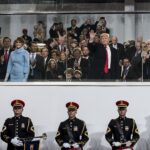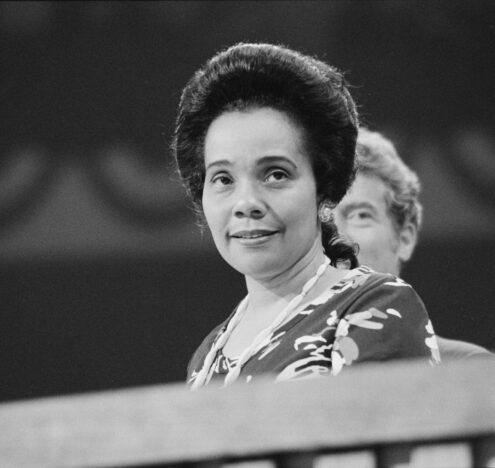The PGA Tour and LIV Golf’s shocking merger announcement forming “a new, collectively owned, for-profit entity” left fans, pundits, and even some players in disbelief. Although the news was widely regarded as a huge win for Saudi Arabia’s Public Investment Fund, both organizations were heavily criticized. The vast majority of the resulting ire was directed toward the Professional Golfers’ Association (PGA), which suddenly became bedfellows with an entity that they repeatedly blasted for human, labor, and political rights violations.
Saudi Arabia’s LIV Golf, too, engaged in a similar about-face. Previously, it argued that the PGA’s anti-Saudi messaging was no more than a rent-seeking endeavor to maintain its monopoly on golf. Their creation of an even larger organization shows that this argument was a farce. A closer examination of Saudi Arabia’s public policies reveals that LIV Golf’s rapid reversal is not uncommon. Rather, it represents a pervasive theme within Saudi Arabian politics.
Saudi Arabia’s foray into the world of sports and entertainment is only one facet of its wide-ranging project to repair its international reputation. Key components of this project also involve its strides in gender equality, improvements in relations with Iran, and changes in foreign aid patterns. Most important, though, is its economic diversification plan: Vision 2030.
Saudi Arabia’s New Vision For Itself
Unveiled in 2016 by King Salman bin Abdulaziz Al Saud and Deputy Crown Prince Mohammed bin Salman, Vision 2030 aims to reduce the country’s reliance on oil rents, diversify the economy, and bolster public service sectors. The plan’s architects promised an ambitious overhaul of Saudi Arabia’s civil society, economy, and political system. They proposed to develop and privatize key sectors — healthcare, tourism, infrastructure, entertainment, and education — while slashing the government’s expenditures. Much like LIV Golf, Saudi Arabian officials changed their tune when it best served them.
How does the government declare Vision 2030 a success without achieving — or in some instances even progressing toward — the program’s stated aims? Like with its LIV messaging, Saudi Arabia abandons their original aims and moves the goalposts.
Despite having missed most 2020 targets of the National Transformation Program, Saudi Arabia offers a peachy project assessment. In recognition of the plan’s fifth anniversary, the Kingdom released “Saudi Arabia Vision 2030: The Journey So Far.” Adorned with vibrant photographs of landscapes, architecture, and optimistic young adults, the pamphlet boasts of remarkable successes, despite many unforeseen challenges. This update overshadows that Saudi Arabia only reached its target for one major goal out of 34: increasing female workforce participation (which increased from 19.7% to 33% between 2018 and 2022). All other major labor, diversification, and fiscal indicators underperformed, stagnated, or regressed. This includes goals like decreasing the unemployment rate, increasing non-oil revenue, and increasing foreign direct investment.
How does the government declare Vision 2030 a success without achieving — or in some instances even progressing toward — the program’s stated aims? Like with its LIV messaging, Saudi Arabia abandons their original aims and moves the goalposts. At times, the original plan and milestone announcements appear only tangentially related.
The original plan has three pillars: vibrant society, thriving economy, and an ambitious nation. The first pillar focuses on further establishing Saudi Arabia as a cultural hub, increasing the standard of living for Saudi citizens and improving the country’s global brand. The next pillar is the largest, detailing steps toward diversification. “A Thriving Economy” outlines specific targets, such as boosting non-oil contribution to GDP to 50%, revitalizing the labor market (e.g., increasing female labor market participation), and increasing investment. The final pillar of Vision 2030 outlines desired improvements in state capacity, transparency, and accountability, like improving the “effectiveness and efficiency of [the] welfare and social development system,” and eliminating corruption.
Vision 2030 is Looking Blurry
Vision 2030 boasts of social change, business and economic gains, increased tourism, and environmental protection. Upon closer inspection, though, it becomes clear that many of Vision 2030’s key components are missing from the report. Many highlighted metrics are either related to the project’s peripheral goals or entirely unrelated to the original plan. For example, the report dedicates entire sections to sports, homeownership, and environmental protection while omitting many labor market, consumption, trade, and government budget metrics. The section most relevant to Saudi Arabia’s economic goals, “Business and Economy,” features scant evidence. Instead of benchmarking its progress with economic data, it mostly restates Vision 2030’s diversification and investment aims.
Though it may be easy to chalk up LIV Golf’s about-face as nothing more than a shrewd attempt at increasing market power and profits, it is also a public representation of Saudi Arabia’s treatment of its other endeavors. Maintaining a facade of radical change supersedes the program’s results, particularly regarding economic diversification.
Though topics like sports easily capture the world’s attention, it is important to closely examine the other aspects of Saudi Arabia’s messaging as well. To better understand the attempts to repair its image, the level of skepticism toward LIV Golf should be applied to Saudi Arabia’s political rights, social equality, and economic diversification projects. Doing so would make it more difficult to move the goalposts.




















